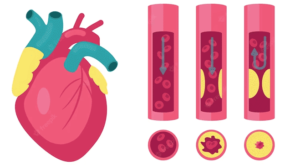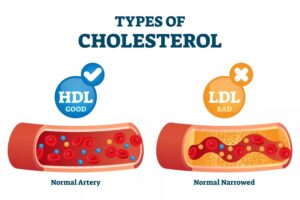BASICS OF LIPIDS

- The human diet is the basic source of energy for human beings. There are seven essential factors for a balanced diet: carbohydrates, proteins, fat (lipids), fibers, vitamins, minerals, and water.
- Cholesterol is a fat-like substance that is essential to your health. You obtain cholesterol from the foods you eat, but the majority of the cholesterol is produced by your liver.
- Cholesterol is an important component in your blood, cells, and body tissues which your brain, nerves, muscles, skin, liver, intestines, and heart use in function.
- Your body uses cholesterol to produce hormones, vitamin D, and bile that help to digest fat.
- Cholesterol helps your nerves and brain send messages. It is also a component of body fat. Your body needs cholesterol to be healthy; however, too much cholesterol is dangerous to your health.
Basics of Lipids

- A total cholesterol test shows the total amount of cholesterol in your blood. A more detailed test, a lipid profile includes lipoprotein measurements that are more useful and reflective of your health.
- Cholesterol travels out from your liver and into your bloodstream on fat and protein carriers called lipoproteins.
- The two main types are low-density lipoprotein (LDL) and high-density lipoprotein (HDL).

LDL
- Most cholesterol is LDL. LDLs transport cholesterol away from the liver and into the bloodstream.
- LDLs contain more fat than protein. LDLs are more likely to connect on the walls of blood vessels, which can contribute to heart disease, including heart attack and stroke.
- LDLs are the bad cholesterol.
- You want your LDL number to be low.
HDL
- HDL cholesterol contains more protein than fats.
- HDLs carry cholesterol away from your arteries and out of your body.
- High HDL levels can reduce the risk of heart attack. HDLs are the good cholesterol.
- You want your HDL levels to be high.
